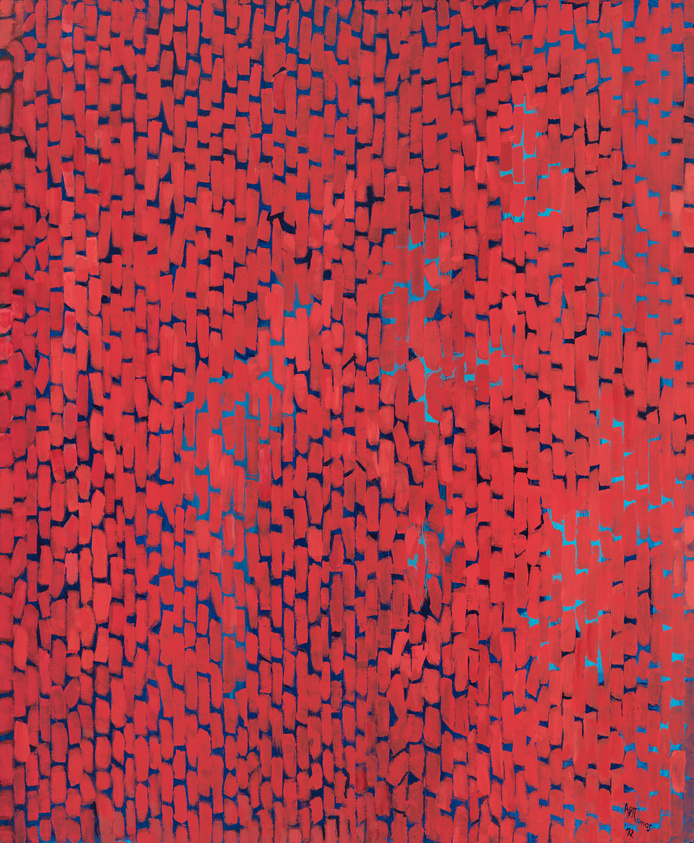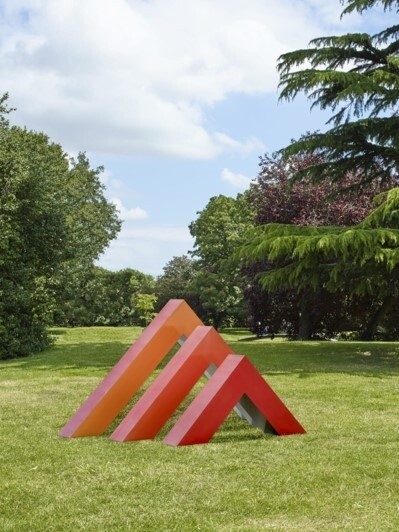Verbal Description: Alma Thomas, Mars Dust, 1972
Oct 2, 2022
0:00
Verbal Description: Alma Thomas, Mars Dust, 1972
0:00
Narrator: Alma Thomas, Mars Dust, 1972. Mars Dust is an acrylic painting on canvas. The painting measures 69 ¼ inches tall by 57 ⅛ inches wide. The background of the painting is primarily a cool, dark blue with lighter blue tones and tints coalescing into washy expanses. On top of the blue, hundreds of short, warmer, red vertical brush strokes rest in a dazzling array. These marks are each about the size of an adult thumb. Not all of the reds are the same tint; some of the strokes are a whisper whiter than others. The brush strokes are deliberate and purposeful, averaging in similar thicknesses though some are slightly longer than others. The brush strokes are opaque and bristle marks are not apparent. The strokes are ordered so that sometimes they touch side to side (and very rarely top to bottom), often leaving small spaces between them, like vertically arranged bricks. These small spaces allow the blues to poke through, appearing as if seen through a sieve.
Thomas strikes a delicate and evocative balance in her use of positive and negative space. This texture brings about the illusion of dust storms on mars placed vertically, as if the viewer is peering down upon them.
Thomas cites the scientific advancements of the “space age” and color television as being pivotal in the conception of her creativity, and as an influence for this painting. Knowing this, her use of color is especially important, reflecting the vibrancy that would have been broadcast on technicolor TV screens. The mutability of the painting’s surface makes a gentle gesture towards the realms that cannot be visually grasped, towards the unknown hopes, aspirations, dreams, and illusions that lie in humankind’s probing of the universe. This question may point to the wonders of space lying not in what we know, but in what we cannot know.


